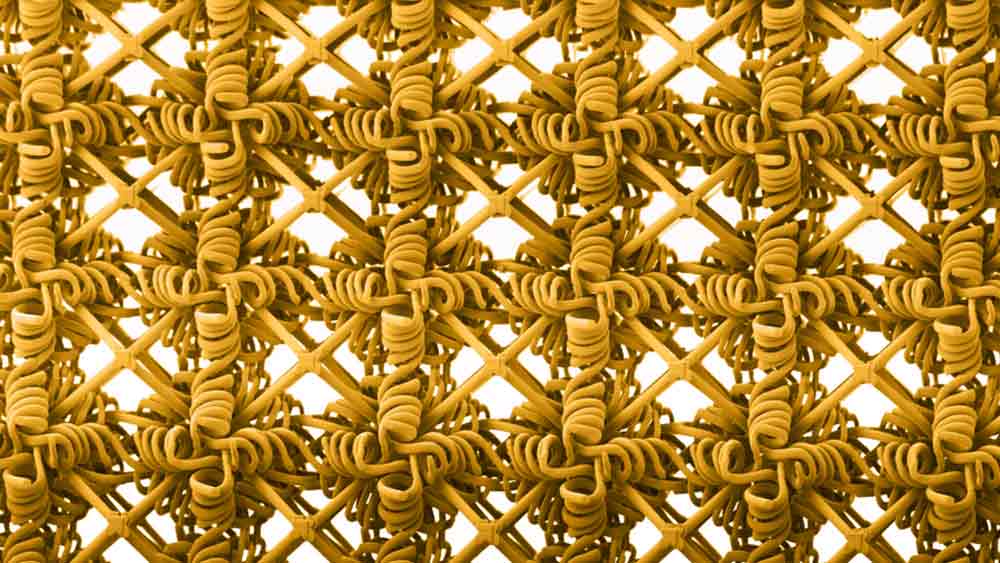Courtesy of the researchers
Metamaterials are synthetic materials with microscopic structures that give the overall material exceptional properties.
In metamaterials design, the name of the game has long been “stronger is better.”
|
ADVERTISEMENT |
Metamaterials are synthetic materials with microscopic structures that give the overall material exceptional properties. A huge focus has been in designing metamaterials that are stronger and stiffer than their conventional counterparts. But there’s a trade-off: The stiffer a material, the less flexible it is.
MIT engineers have now found a way to fabricate a metamaterial that is both strong and stretchy. The base material is typically highly rigid and brittle, but it is printed in precise, intricate patterns that form a structure both strong and flexible.
The key to the new material’s dual properties is a combination of stiff microscopic struts and a softer woven architecture. This microscopic “double network,” which is printed using a Plexiglas-like polymer, produced a material that could stretch more than four times its size without fully breaking. In comparison, the polymer in other forms has little to no stretch and shatters easily once cracked.
…

Add new comment